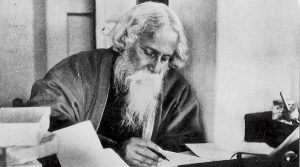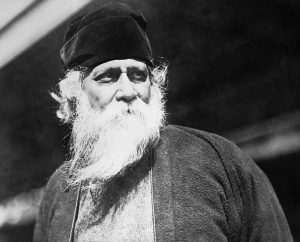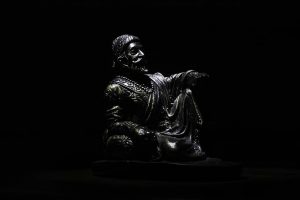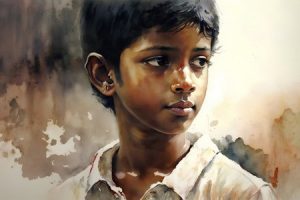
Rabindranath Tagore, is celebrated for his insightful exploration of human emotions and societal dynamics. “The Babus of Nayanjore” showcases the intricate web of social and economic disparities prevalent in Indian society. This essay delves into the issues of class by discussing the class conflict between the narrator and Kailas Babu, and the latter’s identity crisis.
Set in Calcutta, the story revolves around the lives of Kailas Babu and the residents of Calcutta. It is seen that the “Babus of Nayanjore” were famous landholders who were noted for their “princely extravagance”. Subsequently, the flood washed away the wealth of this family. Kailas Babu, the “relic” of this family, migrated from Nayanjore to Calcutta as his familial estates were all sold off “to liquidate the debt”.
The conflict between the narrator and Kailas Babu:
In the course of the story, the clash between the narrator and Kailas Babu is the conflict between self-made wealth and family fortune. The narrator juxtaposed his family with that of Kailas Babu’s lineage, highlighting their differences. His father earned money “by his own exertions, and prided himself on never spending a penny more than was needed”. He described his family as “self-made”. They “never had any inclination to earn the title of Babu by extravagant display” or family name.
Consequently, he disliked seeing Kailas Babu’s usage of his family reputation to earn respect in society. Moreover, he thought that Kailas Babu, being from an aristocratic family, looked down upon his family because his “father had earned money with his own hands”.
Furthermore, there was another aspect due to which the narrator disliked Kailas Babu. The narrator considered himself an extremely qualified and handsome bachelor who was coveted as an eligible candidate in the marriage market. He was annoyed that Kailas Babu had not offered his granddaughter’s hand in marriage to such an eligible bachelor as him. On the other hand, Kailas Babu’s sense of superiority due to his family name resulted in his assumption that prospective bridegrooms would themselves propose to marry his granddaughter. Thus, this arrogance of believing oneself to be from an upper-class family made the narrator angry, showcasing the conflict of class in Tagore’s story.
Kailas babu’s struggle for identity in Tagore’s story:
In the story, Tagore portrays Kailas Babu’s struggle for identity. The protagonist is an individual who refuses to lose touch with his affluent roots. Even though he had a short supply of clothes, he still managed to be “spotlessly neat in his dress on all occasions”. He would close the doors of his house and do household tasks like ironing his “shirts and linen with his own hands” and other menial chores. This was a way to cover up his penury.
Occasionally, he would showcase his remaining family heirlooms like a small gold salver, an expensive shawl and a “filigree box for otto-of-roses”, among other things. This was done to “save the world-famed dignity of the Babus of Nayanjore”. He tried to maintain his status by telling his peers about his expensive tobacco, which he was unable to provide due to some mishap or the other.
Subsequently, Thakur Da’s invitation to his friends for lunch was a superficial show. Everyone understood his bluff and played along with him. He talked about his lodgings, which were unsuitable for someone like him. However, everyone was aware of his conceit and farcical lie, “Thakur Dada’s poor lodging was much too small for his position, and we used to condole with him about it”. Furthermore, when the narrator falsely informed Kailas Babu about the impending visit of the Chota Lât Sahib, he instantly became nervous and started ruminating about his “own ignorance of English”. Although he considered himself to be a part of the aristocratic class, he did not possess the cultural or financial capital to identify as one. These instances portray the identity crisis that Thakur Da suffered from due to his financially deprived class status.
Conclusion:
Thus, in conclusion, the characters in Tagore’s story are shown to be trapped in a cycle of pretence and deception, constantly trying to project an image of higher social status than they actually possess. Ultimately, the story critiques the oppressive nature of class distinctions and the toll it takes on one’s sense of self-worth.
It is also interesting to listen to Tagore’s Rabindrasangeet, which is available on Phalguni Mookhopadhaya’s Youtube Channel — https://www.youtube.com/@pmbrainware





